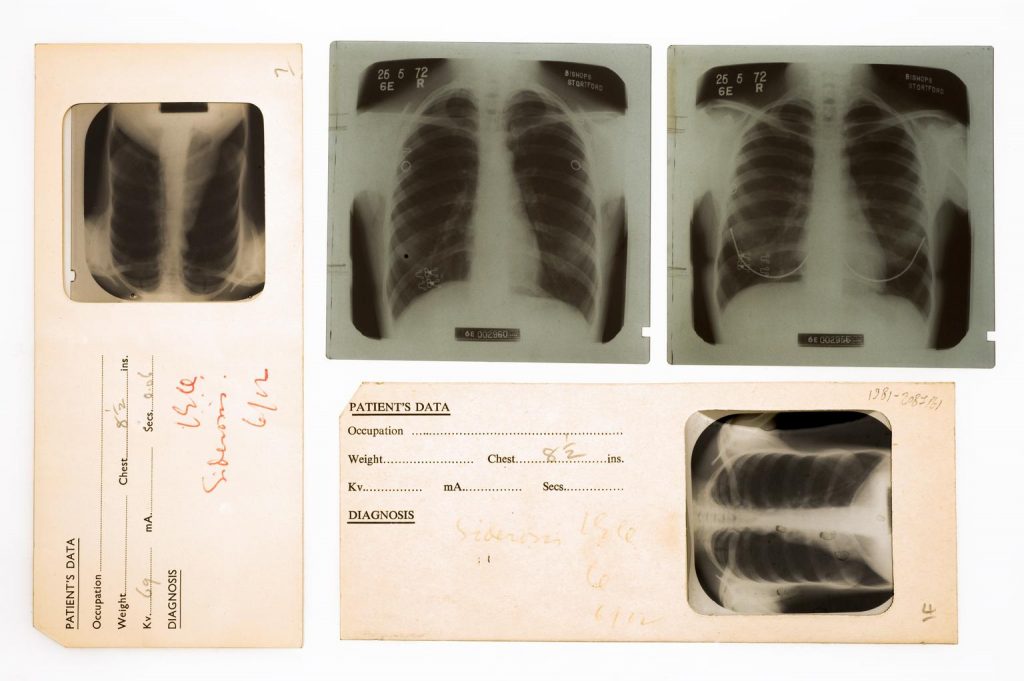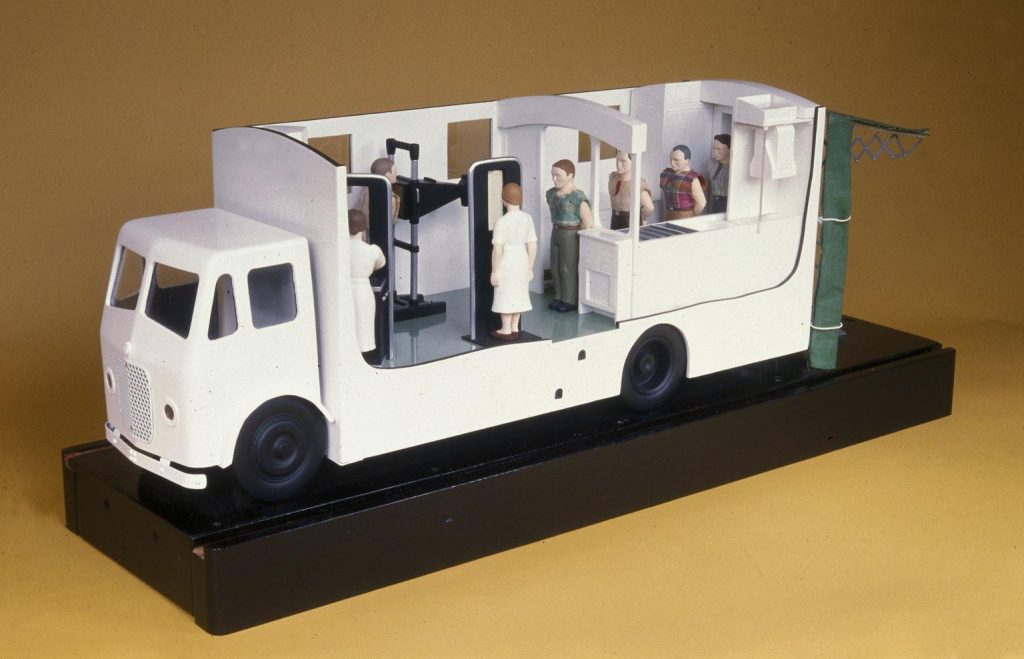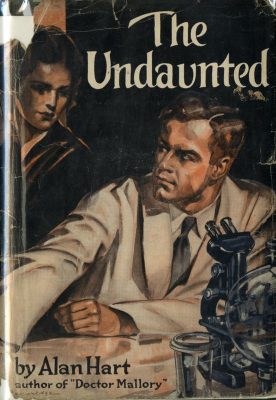Tuberculosis has taken more lives than any other disease. For centuries, scientists tried to find a cure, and in 1882 Robert Koch was the first to have a huge breakthrough. He proved that tuberculosis was not hereditary but caused by bacteria called Mycobacterium Tuberculosis, which is highly contagious and transmitted by coughing and sneezing.
On 4 October 1890, eight years after this discovery, Alan Hart was born.

At this time, the disease was still considered the leading cause of death in the United States, and the focus had shifted towards detecting it and implementing public health measures to stop its spread.
Later in his life, Alan would become a gifted physician, pioneering the use of newly discovered X-ray technologies to diagnose tuberculosis in its early stages, saving countless lives and contributing to the decline of the epidemic in the Global North.
This was however not the only revolutionary part of Hart’s life. Apart from his ground-breaking research, he was also the first known transgender man in the world to undergo gender re-assignment surgery by hysterectomy and oophorectomy – the removal of both uterus and ovaries.
Born in Halls Summit, Kansas, Alan was assigned female at birth. Growing up on his grandfather’s farm, he knew he was a boy from an early age, and spent his days going about what were perceived at the time as a boy’s activities. After his father’s death, Alan claimed that he would now take on the role of the man of the house and asked if his mother would let him cut his hair and wear trousers. Later, even his grandparent’s obituaries describe Alan as their grandson.
As the highest achieving student of his class, Hart started at Albany College at eighteen, moving on to pre-medical school at Stanford University, and in 1913 began to study medicine at the University of Oregon Medical Department in Portland. Now dressing in more male attire and having relationships with women, he began to question and research his “condition”.
At the turn of the 20th century, sexualities had begun to become medicalised, and everything considered different to the norm – including what would later be known as homosexuality and transsexuality – was described as “perversion”, “inversion” or “deviance”.
Upon reading the material published about sexuality and being highly educated in medicine himself, Hart fell into despair and even contemplated suicide. Instead, he decided to seek help from a physician called Allen J. Gilbert, who later described his treatment in an article published in the Journal of Nervous and Mental Disease.
Starting out with psychoanalysis and hypnosis, both patient and therapist quickly realised that a “correction” of Hart’s “condition” was not going to work. Hart made it clear that he did not want the treatment to result in him losing his ‘masculine ambitions and tastes with a consequent substitution of the characteristics common to a female’ (Gilbert 1920: 319). Gilbert, however, who believed in medicine’s ability to cure such “abnormalities”, could not promise this.
As a result, Hart asked for something revolutionary at the time – a hysterectomy. He expressed that this would spare him having to deal with periods as a man, but also, believing it would help his case, brought forward a eugenic argument: sterilisation, he stated, was advised for someone with his “abnormal inversion” (Gilbert 1920: 319) – although it is very likely that he didn’t himself share this belief. Regarding Hart as highly intelligent and not mentally ill, Gilbert agreed to go along with the plan and in 1918 removed both his uterus and ovaries.
At the time of his transition, hormone treatment for transgender people was not yet available. It was only in the 1920s that research into sex hormones took up pace. Testosterone was first discovered in 1935 in the Netherlands, and later that year, the hormone was chemically synthesised. Soon after, testosterone became commercially available.
Having waited for more than twenty years after his sex change, Alan Hart was then among the first people beginning hormone replacement therapy.
Meanwhile and immediately after the surgery, Hart cut his hair, changed his clothes and name, and married his partner, Inez Stark. Having recently graduated, he took up work at City Hospital in San Francisco, determined to start his medical career.
However, life as a transgender person still posed its difficulties. Shortly after moving to San Francisco, Hart was forcibly outed by a former classmate and his life was laid open by various media outlets.
Despite repeatedly having to move workplace due to discrimination and his first marriage subsequently falling apart, Hart bravely faced all challenges transphobia caused him. In an interview he said: ‘For years I had been unhappy. With all the inclinations and desires of the boy I had to restrain myself to the more conventional ways of the other sex. I have been happier since I made this change than I ever have in my life, and I will continue this way as long as I live’ (Albany Daily Democrat, March 26, 1918).
In 1925, he married his second wife Edna Ruddick and decided to continue his studies. Intrigued by the only recently discovered X-rays, he went on to obtain a Master of Science degree in Radiology from University of Pennsylvania and later a master’s degree in public health from Yale University.

X-rays had at that time mostly been used to expose tumours and bone fractures, but Hart was curious about their potential to detect tuberculosis.
The disease usually begins to attack a patient’s lungs and can then then spread to the kidneys, spine, and brain. Hart realised that an early detection was crucial – both to isolate the victims and later, when antibiotics were discovered, to identify who was eligible for life-saving treatment.
By carrying out X-ray screenings of the chest, Hart was able to see signs of tuberculosis even before symptoms occurred.

This discovery was a game-changer for the Public Health sector and soon Hart became Tuberculosis Control Officer for the Idaho Tuberculosis Association. Between 1933 and 1945, he set up mobile TB screening units and together with his wife travelled across rural Idaho to make them accessible to all communities, providing discrete and safe spaces he called ‘chest clinics’.

Up until the 1970s, mass radiography campaigns were used all over the Global North, using buses, railroad cars, planes, and boats as mobile units to detect as many cases as possible before it could be passed on.

Tuberculosis remains a serious health issue today, especially in the Global South, and is still considered one of the top ten causes of death (WHO).
A talented writer on top of being an excellent physician, Hart shared his research widely, both with the medical community as well as general audiences. He even took to writing fiction. His novels like The Undaunted from 1936 often tell of doctors who challenge societal norms and can be seen as illustrating the struggles he had to go through himself.
Throughout his life and until his death in 1962, Alan Hart was an inspiration for others. His story is not only one of a man who revolutionised science and saved innumerable lives, but also highlights how trans people have always existed and contributed to the wellbeing of society – despite the discrimination they face.
One comment on “Happy Birthday Alan Hart”
Comments are closed.
Hallo Laura,
sehr interessanter Artikel!
Solche Hintergruende werden nur selten aufgegriffen.
Mach weiter so!
Liebe Gruesse